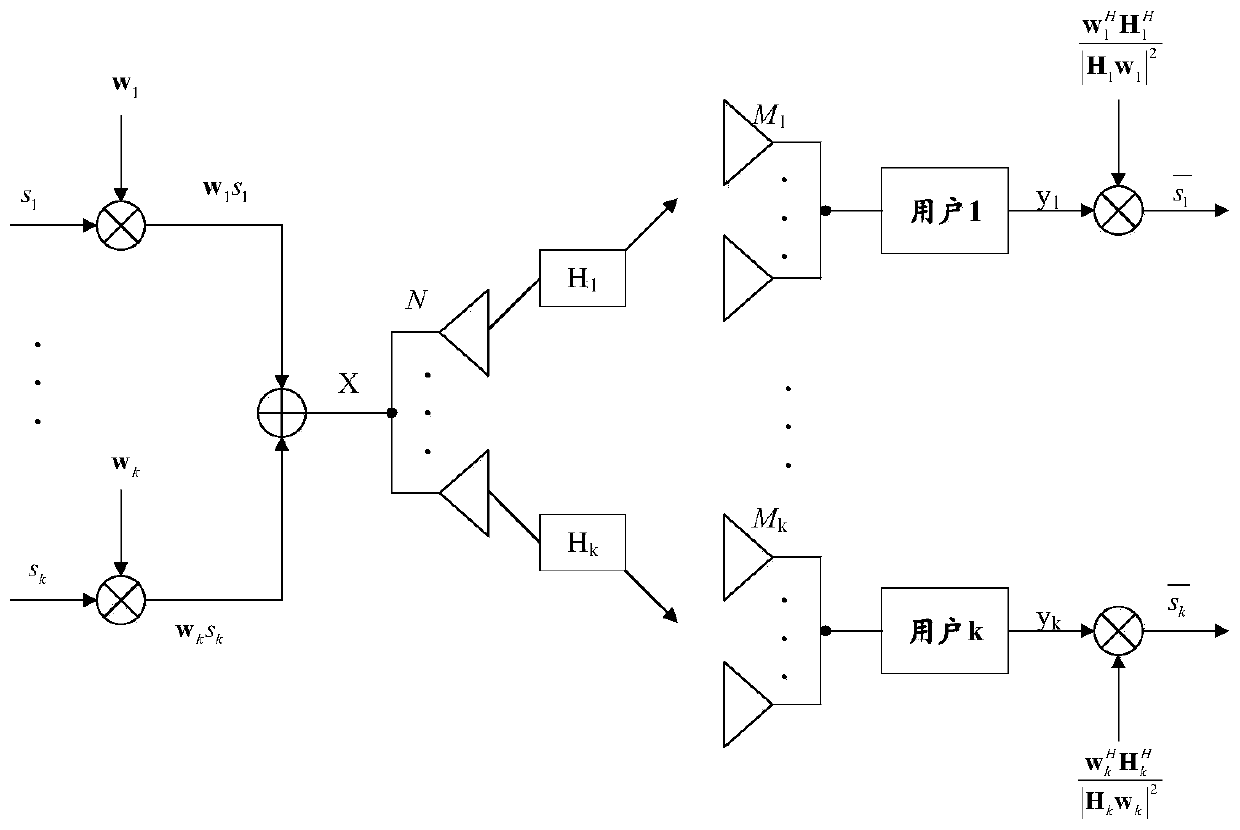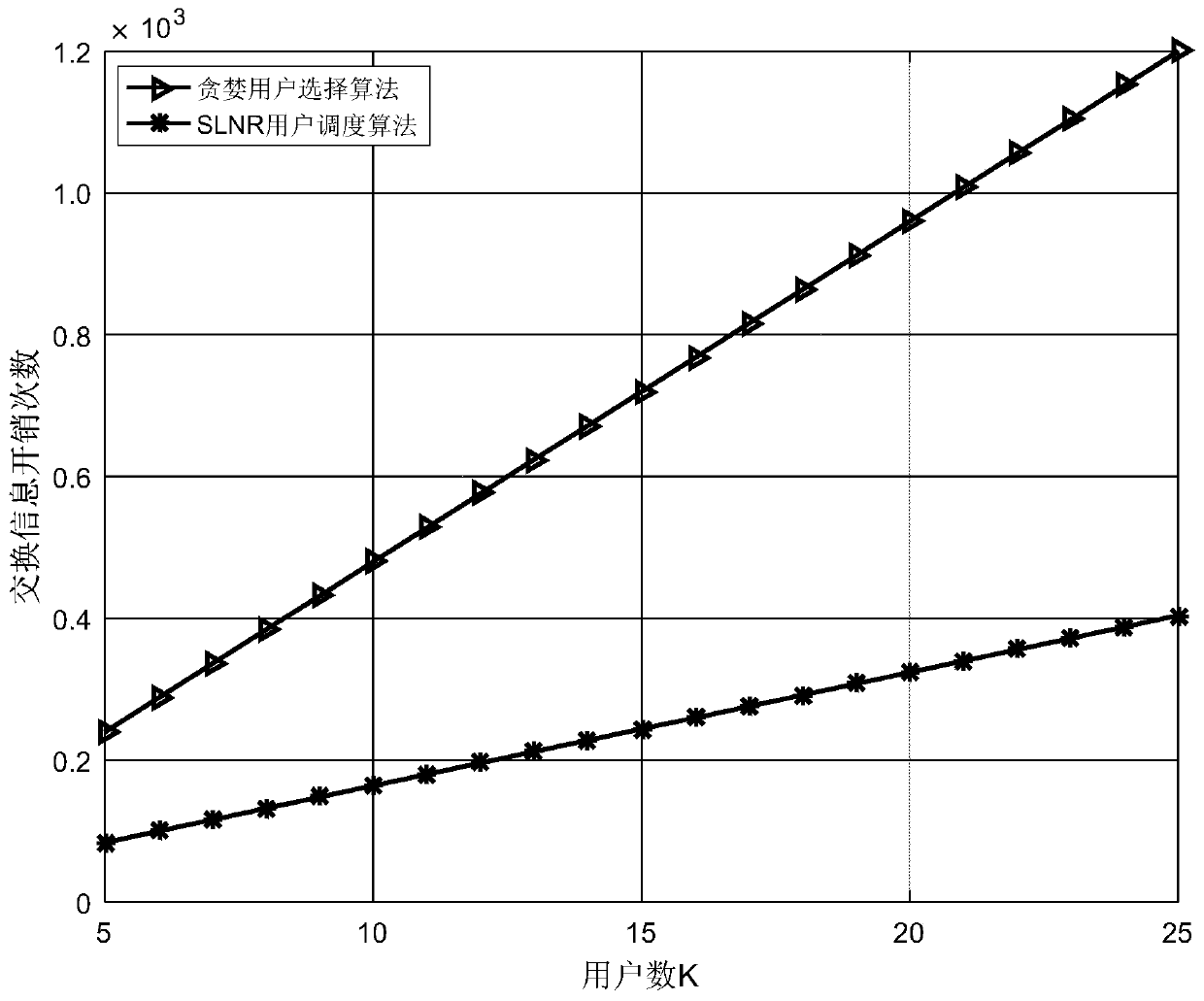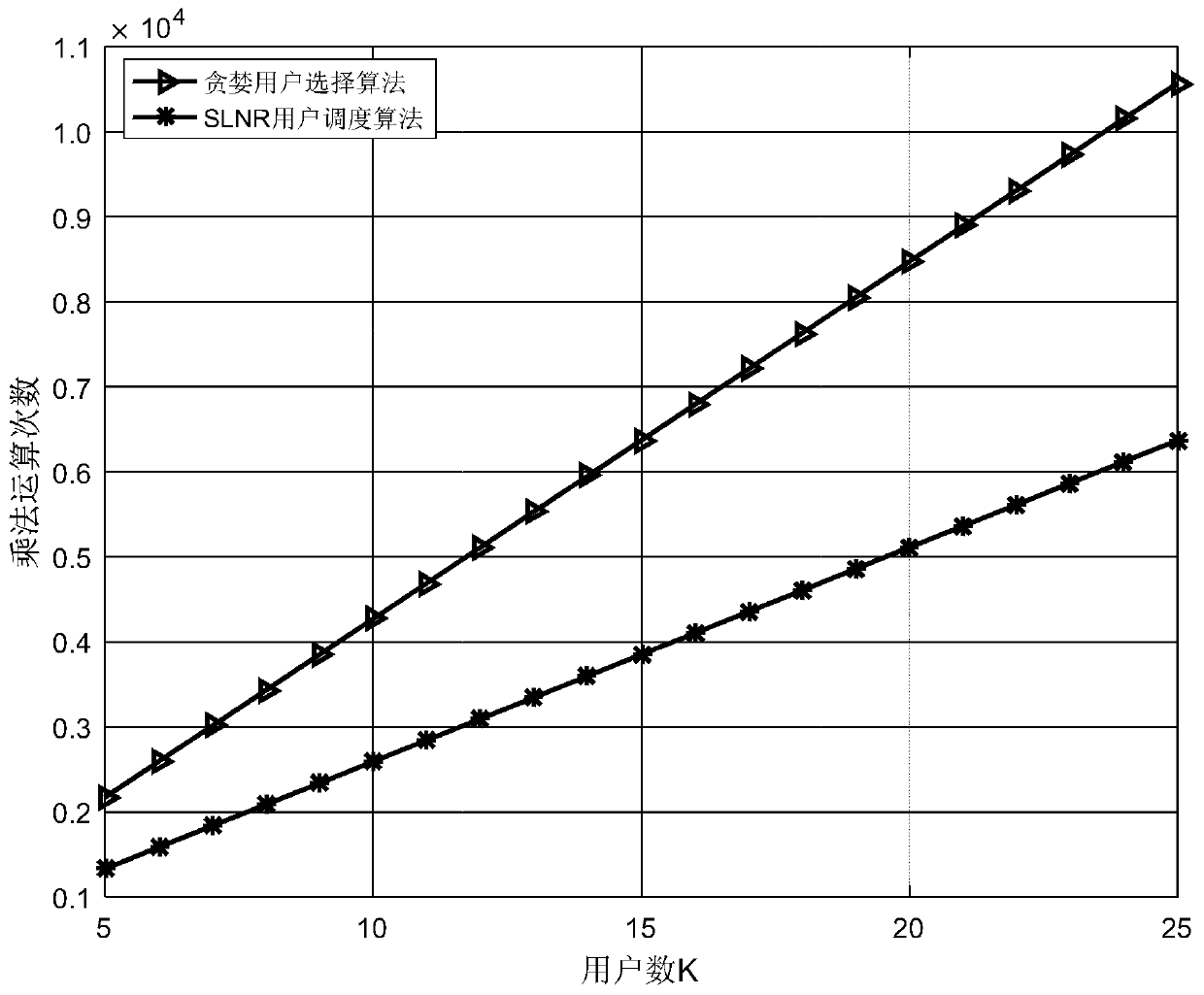MU-MIMO system user scheduling method based on signal-to-leakage-and-noise ratio
A technology for signal-to-leakage-to-noise ratio and system users, applied in transmission systems, radio transmission systems, electrical components, etc., can solve the problems of high requirements for channel state information and high computational complexity of algorithms, and reduce switching overhead and complexity Reduced effect
- Summary
- Abstract
- Description
- Claims
- Application Information
AI Technical Summary
Problems solved by technology
Method used
Image
Examples
Embodiment Construction
[0044] The following describes the preferred embodiments of the present invention with reference to the accompanying drawings to make the technical content clearer and easier to understand. The present invention can be embodied in many different forms of embodiments, and the protection scope of the present invention is not limited to the embodiments mentioned herein.
[0045] Such as figure 1 As shown, the present invention considers a multi-cell downlink cellular network environment, the number of cells is L, and the base station is configured with N t There are only one transmit antenna, and the cell communicates with K users through a single antenna. In each time slot, it is assumed that users are independent and randomly distributed in a cell, N is the number of users selected in user scheduling, and the set of N users served by the base station is denoted as S N . Suppose M k Indicates the number of receiving antennas of the kth (k=1, 2, ..., K) user, and satisfies ...
PUM
 Login to View More
Login to View More Abstract
Description
Claims
Application Information
 Login to View More
Login to View More - R&D
- Intellectual Property
- Life Sciences
- Materials
- Tech Scout
- Unparalleled Data Quality
- Higher Quality Content
- 60% Fewer Hallucinations
Browse by: Latest US Patents, China's latest patents, Technical Efficacy Thesaurus, Application Domain, Technology Topic, Popular Technical Reports.
© 2025 PatSnap. All rights reserved.Legal|Privacy policy|Modern Slavery Act Transparency Statement|Sitemap|About US| Contact US: help@patsnap.com



